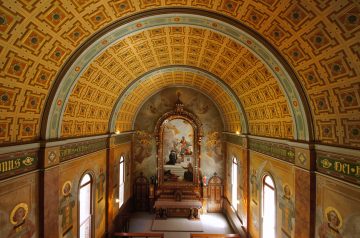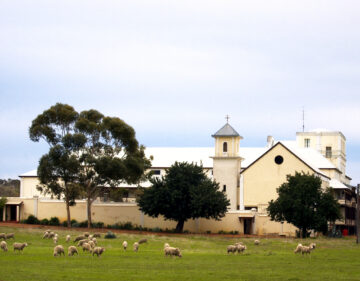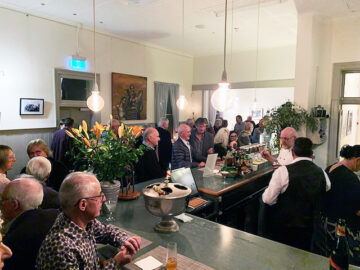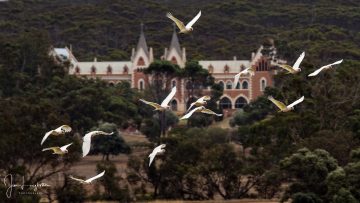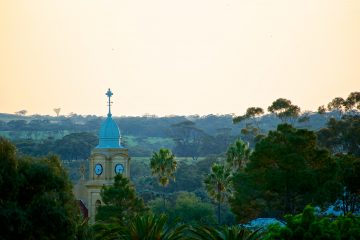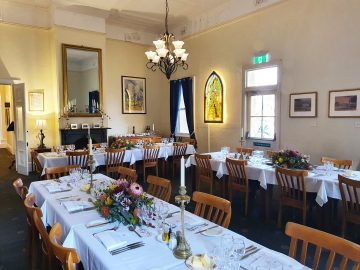Thursday, 27th October 2022
A Visitation…Like No Other!
Back in 2019, delegated by the Abbot President of the Subiaco Cassinese Congregation, to which New Norcia belongs, Abbot Anselm Atkinson and Prior Giles Conacher of Pluscarden Abbey in Scotland made the long journey to Australia to preside at our Canonical Visitation. The Visitation, which usually takes place every three years, is a kind of monastic audit, whereby the Abbot and members of his community are interviewed individually to discuss various elements of the monastic life as it is experienced in this particular place. Community meetings and discussions are held, documents such as the Acts of the previous Visitation, financials, minutes of Chapter, Deans, and Community meetings are inspected, and a final report, which may include some recommendations, is given. This report is in turn presented to the Abbot President in Rome.
Underlying these canonical requirements is perhaps a more important, and certainly much appreciated aspect of the Visitation – fraternal encouragement and support. So significant was this aspect during the 2019 Visitation that I asked if that Visitation could be left open, which would allow for some on-going support in a particular way. With the Abbot President’s approval and blessing, Abbot Anselm and Prior Giles agreed to return later that year to further engage with the community and its particular suite of issues. However, COVID-19 intervened, resulting in strict border closures thus preventing their return.
Finally, the Visitors were able to return to New Norcia in October 2022. With such a long intermission, rather than pick up where we had left off, all parties agreed that, given it was now due, it was more prudent to begin a new Visitation. So, upon arrival we met to officially close the 2019 Visitation and the opening of a new one was declared.
With most of the official agenda completed in the first week, we decided to postpone the final report and closure and suspend the Visitation, which allowed me to accompany the delegation to make pastoral visits to Notre Dame Priory (a new monastic foundation in Colebrook, Tasmania) and St Mark’s Abbey (an Anglican Benedictine Community in Camperdown, Victoria).
Notre Dame Priory
This community of eight monks has been established by Fr Pius Noonan, a monk of Flavigny (France), to establish a monastic community with particular emphasis on the traditional Tridentine liturgy. With the encouragement and support of the Bishop of Hobart and humble beginnings in various places, the community has settled on a magnificent property close to the tiny historic town of Colebrook. The thousand or so hectare property known as ‘Jerusalem Estate’, boasts lush rolling hills, a bubbling creek, an 1840s Georgian manor house, guesthouse, workshops, sheep, poultry, a fruit orchard and vegetable garden. With one of the monks having a background in viniculture, work has begun on establishing a vineyard, which will produce predominantly pinot noir and chardonnay. The monks have recently moved and re-purposed a small wooden church and assembled and installed cabin cells to form a cloister…all this in just five years.
This is certainly a community with vision – it hopes to one day build a monastery on one of the hills on the property, boasting majestic vistas, a most idyllic location for prayer and contemplation.
We enjoyed such gracious hospitality during this pastoral visit, including an outing to Richmond, another nearby historical town featuring the famous Richmond Bridge (1823) and Pugin church of St John the Evangelist, the oldest existing Catholic church in the Commonwealth of Australia, which also has connections to the Benedictines – John Bede Polding OSB laying the foundation stone in 1835, and Fr James Cotham OSB being the first priest in charge.
Although our traditions are very different, there was a great sense of fraternity. We wish the Notre Dame community every blessing as they continue to develop and explore their options in establishing their place in the wider Benedictine Confederation.
St Mark’s Abbey
After a couple of days of social catch ups in Melbourne, including an extra day due to a severe weather warning, we made our way to the dual Anglican Benedictine Community of St Mark’s Abbey founded in the1980s by the late Abbot Michael King (originally in Melbourne). The monastery is situated on the outskirts of the beautiful grand southwestern Victorian historic town of Camperdown. Overlooking a magnificent crater-lake, this Australian monastic gem boasts beautiful Victorian bluestone monastic buildings and guesthouse, surrounded by exquisite manicured gardens and fruit orchard. The community supports itself through agistment, a lucrative printing press, the production of very fine incense, and sales from its monastic shop, which stocks a good variety of religious publications, icons, cards and other devotional items.
Along with monastic communities all over the world, the community at Camperdown is experiencing particular fragility, with just one monk (Dom Placid) and one nun (Sr Raphael) remaining. That said, every time I visit this community, I am inspired by their perseverance and adaptability – I am simply awe struck by their unwavering commitment to monastic observance.
The monastery is a much-loved presence in this rural district made up of beef and dairy farms, and the community enjoys much support from the local parish priest, oblates and locals. With Dom Placid in hospital and Sr Raphael recovering from a broken arm, we too were pleased to be able to make a small contribution to the work schedule in the printery and incense workshop during our visit.
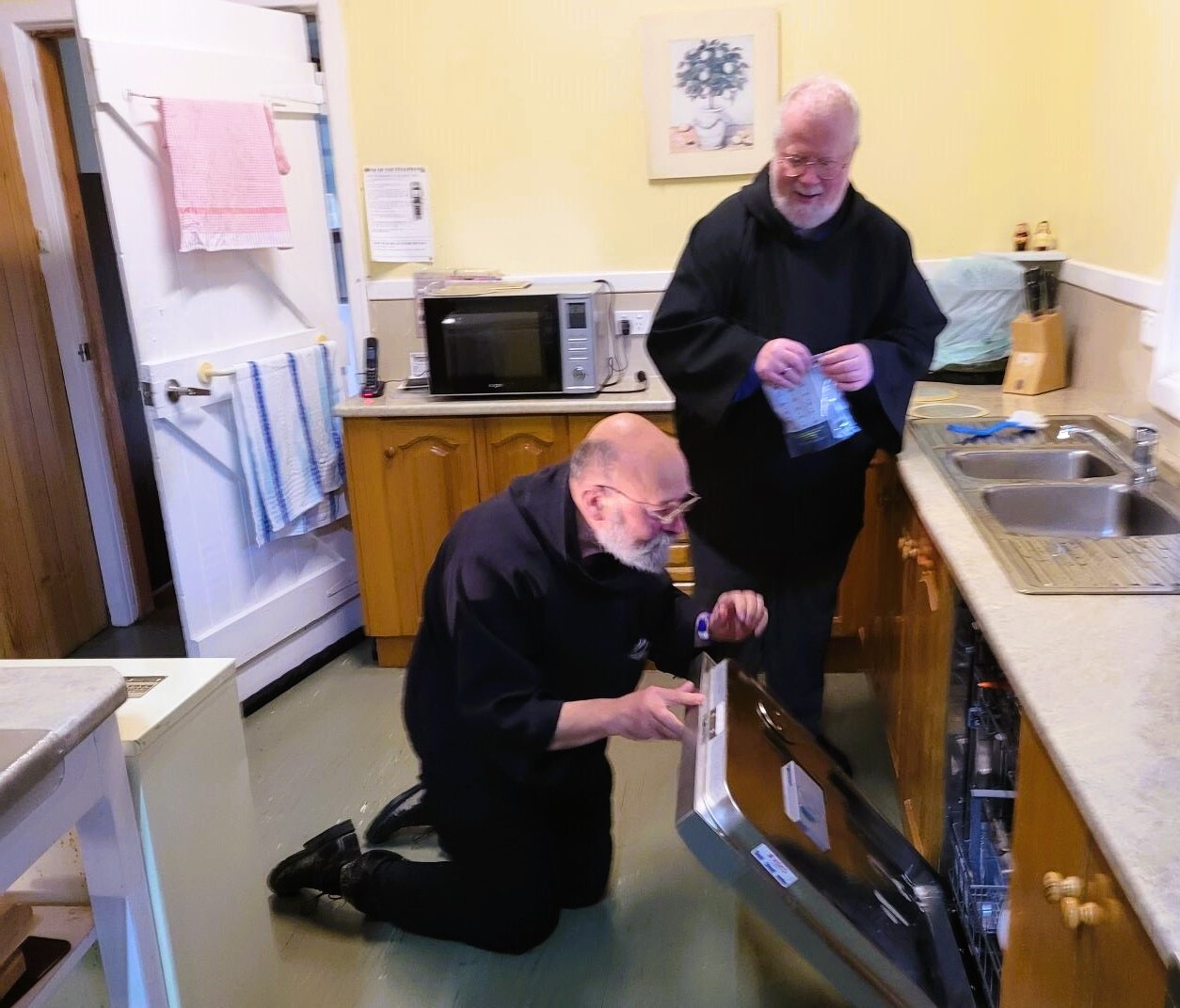
Back to the Visitation…
Upon our return to New Norcia, the Visitation resumed. After final interviews and sessions, the Visitation Report was presented and the Visitation officially closed. The visitors were pleased to have a few days with free time to relax and attended the Spring Abbot’s Table at the Hostel, before making the long journey back to Scotland. We are so grateful to the Visitors for their extraordinary service to our community, to the Abbot President, and to our monastic brothers of Pluscarden who so graciously allowed both Abbot and Prior to spend this precious time with us.
Abbot John
